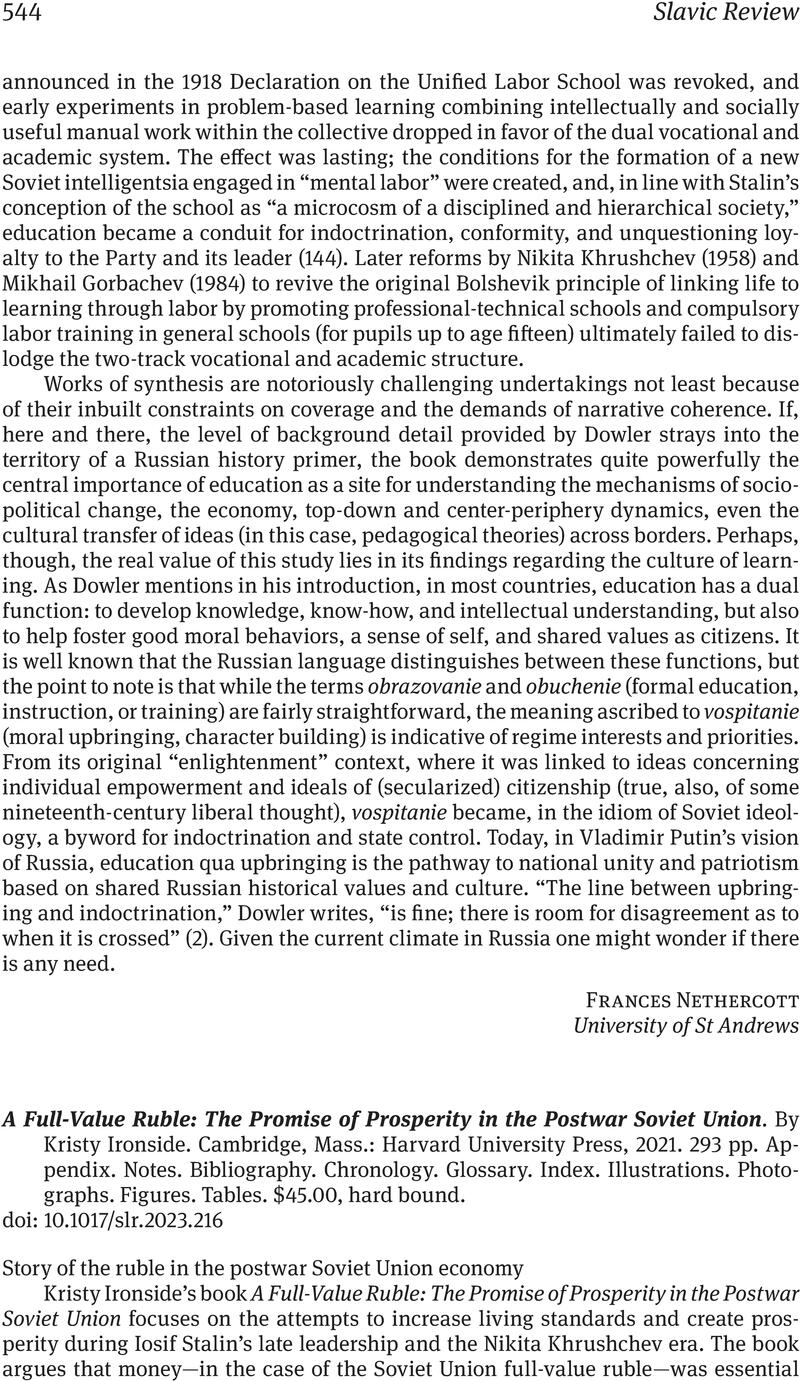No CrossRef data available.
Article contents
A Full-Value Ruble: The Promise of Prosperity in the Postwar Soviet Union. By Kristy Ironside. Cambridge, Mass.: Harvard University Press, 2021. 293 pp. Appendix. Notes. Bibliography. Chronology. Glossary. Index. Illustrations. Photographs. Figures. Tables. $45.00, hard bound.
Review products
A Full-Value Ruble: The Promise of Prosperity in the Postwar Soviet Union. By Kristy Ironside. Cambridge, Mass.: Harvard University Press, 2021. 293 pp. Appendix. Notes. Bibliography. Chronology. Glossary. Index. Illustrations. Photographs. Figures. Tables. $45.00, hard bound.
Published online by Cambridge University Press: 01 November 2023
Abstract
An abstract is not available for this content so a preview has been provided. Please use the Get access link above for information on how to access this content.

- Type
- Book Review
- Information
- Copyright
- Copyright © The Author(s), 2023. Published by Cambridge University Press on behalf of the Association for Slavic, East European, and Eurasian Studies


